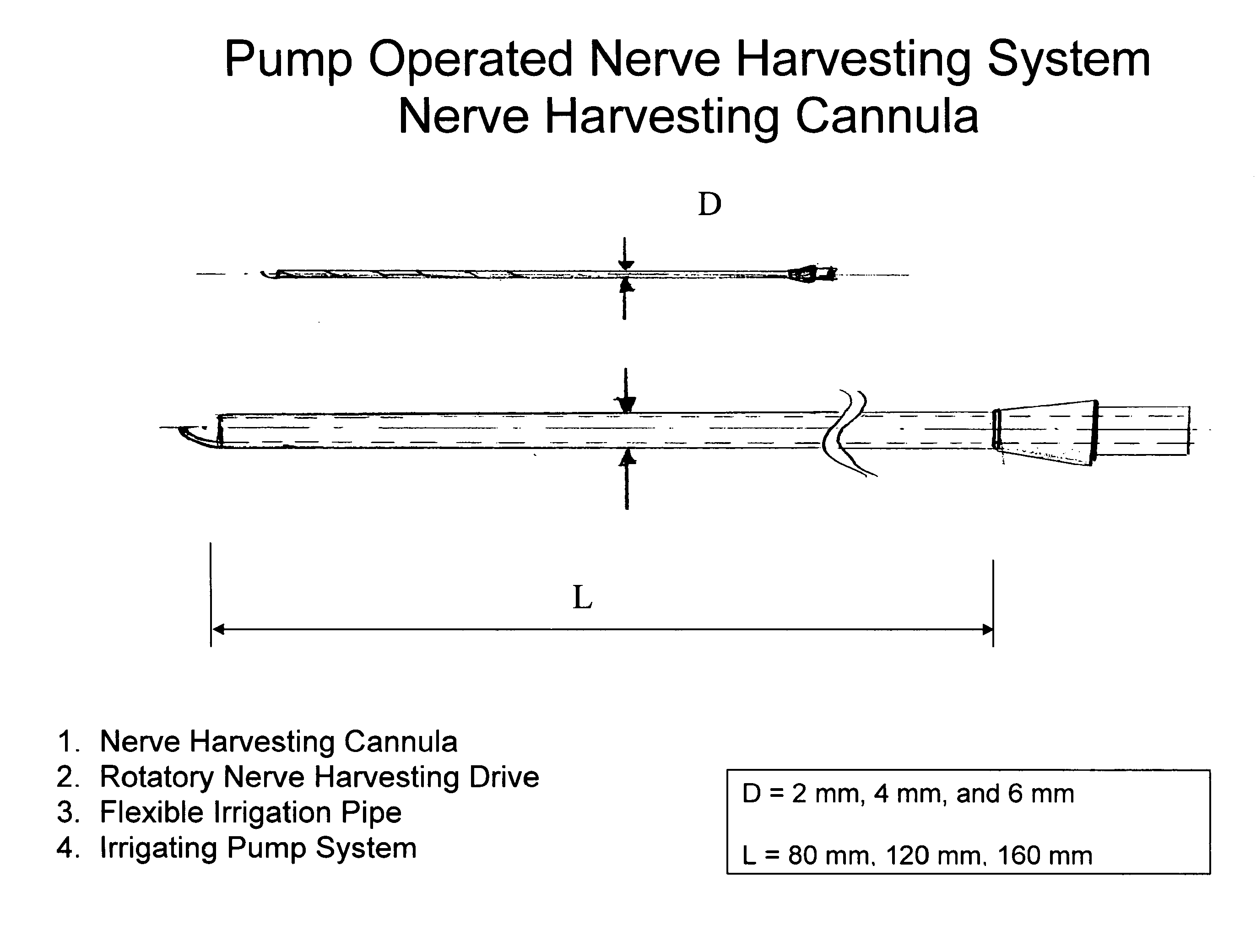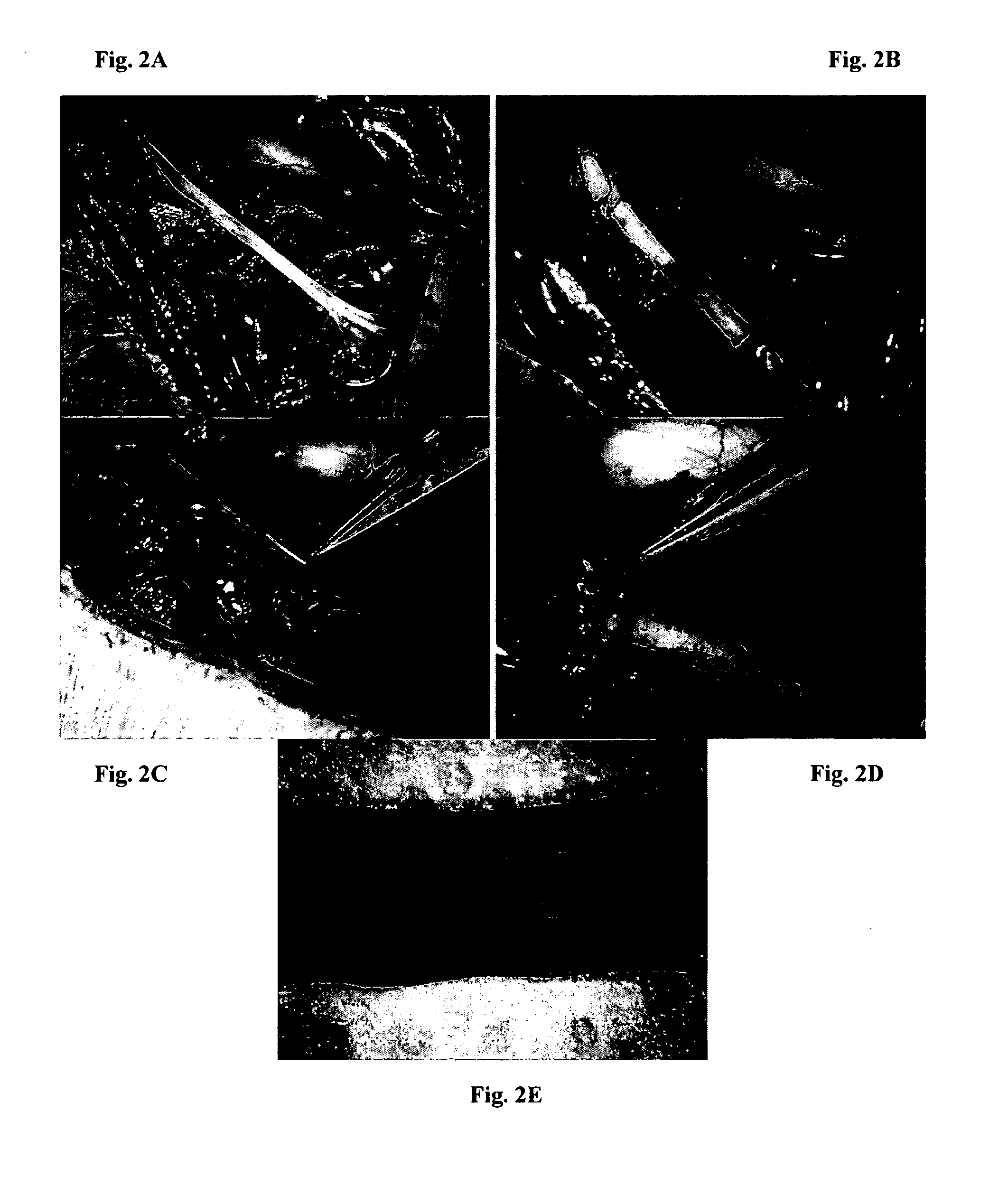Use of Epineural Sheath Grafts for Neural Regeneration and Protection
a technology of epineural sheath and grafts, which is applied in the field of neural regeneration and protection, can solve the problems of significant gaps, optimal functional outcome, and major challenges in the surgical management of nerve defects, and achieve the effect of minimising inflammatory reactions
- Summary
- Abstract
- Description
- Claims
- Application Information
AI Technical Summary
Benefits of technology
Problems solved by technology
Method used
Image
Examples
example 1
Repair of Peripheral Nerve Defects with Epineural Sheath Graft
[0087]In this study, the potential of using detubulized flat epineural sheath strip for bridging nerve gaps as an alternative to nerve autografting technique was investigated. Nerve gaps were created by removing a 1.2 cm segment of the right sciatic nerves. The epineurium of the removed segment was incised longitudinally and by removing the fascicules, a flat rectangular shaped epineural sheath was obtained. The groups (6 rats of each) repaired with one strip, two-strip and full epineural sheath grafts were compared with the animals repaired with autografts and the untreated groups at 12th week. Toe-spread was better in rats repaired with full sheath grafts and conventional nerve grafts compared to single strip graft at 12th week. Somatosensory evoked potential evaluation demonstrated no significant difference in latencies between conventional and epineural sheath groups. Histomorphometric results of the sections from the...
example 2
Enhancement of Neural Regeneration of Peripheral Nerve Defects by Epineural Tube Graft Enriched with Donor Derived Bone Marrow Stromal Cells
[0113]Nerve grafting has been the most widely accepted surgical intervention for the repair of peripheral nerve defects. Traditionally however, such interventions have been associated with varying degrees of donor site morbidity. In the search for alternative methods of peripheral nerve repair, the use of biological and artificial materials for the creation of nerve conduits has been investigated. This study described herein was performed to assess the effects of bone marrow stromal cells (BMSC) in nerve gaps repaired with isogenic, isolated epineural tubes filled with isogenic and allogenic BMSCs.
Methods
[0114]A total of 54 isolated epineural tubes were harvested. Access to the peripheral nerve e.g. sciatic nerve was made by skin incision and subcutaneous tissue dissection down to the anatomical location of the nerve. At this level the sciatic n...
example 3
Immunostaining of the Epineural Tube
Methods:
[0121]The sciatic nerves were harvested from naïve Lewis rats (Lew RT11). The fascicles were removed using fascicle-stripper device. After fascicle removal empty epineural tube was created. This tube was next evaluated for expression of nerve factors involved in nerve growth and regeneration and was evaluated by monoclonal antibodies and immunofluorescence technique.
[0122]Next the cross-sections and longitudinal sections were prepared from whole tubes as well as from tubes split opened and let flat for the testing.
[0123]These freshly dissected nerve tubes from naïve Lewis rat were snap-frozen in liquid nitrogen. Prior to immunostaining tissue slides were cut for 5 μm slides and fixed for 10 min. in acetone. Next, sections were rinsed in TBS (Dako) buffer and incubated with mouse anti-rat NGF (H-20), GFAP (2E1), VEGF (C1) (Santa Cruz Biotechnology, Inc), S100 (clone 4C4.9) (LabVision), MHC class II (clone OX-17) and Laminin B (clone D18-2.2...
PUM
 Login to View More
Login to View More Abstract
Description
Claims
Application Information
 Login to View More
Login to View More - R&D
- Intellectual Property
- Life Sciences
- Materials
- Tech Scout
- Unparalleled Data Quality
- Higher Quality Content
- 60% Fewer Hallucinations
Browse by: Latest US Patents, China's latest patents, Technical Efficacy Thesaurus, Application Domain, Technology Topic, Popular Technical Reports.
© 2025 PatSnap. All rights reserved.Legal|Privacy policy|Modern Slavery Act Transparency Statement|Sitemap|About US| Contact US: help@patsnap.com



